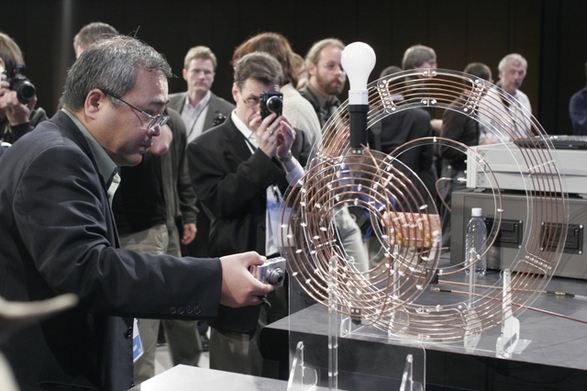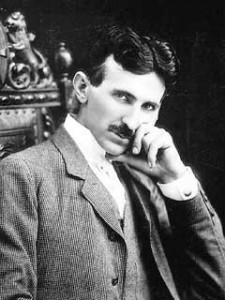
Wireless Electricity is Real and Can Change the World
From Truther
A revolution in the method of transmitting and receiving power is taking place, and the results as it pertains to the everyday consumer may not be far behind. In fact, some forms of the technology will be made available this year.
Picture yourself never having to worry about recharging your phone, IPod or laptop as long as you were inside a wireless energy zone. That zone can be located in your house, on the train, in the airport, or at your workplace.

“Laptop batteries are always burning out and always need a charge. What we did was build a coil into a standard laptop computer and it gets its source from behind a wall in your office,” said Eric Giler, president and CEO of WiTricity. “You could move them around the room and the laptop will continue to charge.”
With major competition along many different technological avenues of bringing wireless power to the market, it’s almost assured that some form or another will be used in the mainstream before too long.
Companies such as Sunnyvale, Calif., based PowerBeam, showcased their wireless lamps and picture frames which were powered by technology that can beam optical energy into photovoltaic cells using laser diodes, at last week’s Consumer Electronics Show in Las Vegas.
Although not successful at the time, Nikola Tesla is considered to be the first to try out the wireless electricity approach when he attempted it in 1890.
Another method is the eCoupled wireless electricity technology, created by Fulton Innovation, that utilizes a technique which by leveraging the physics of near-field inductive coupling eliminates the need for power chords by creating an electromagnetic conduit.
The ramifications of such technology hitting the market are endless.
Businesses, both large and small, would be sure to purchase such technology once proven that it can run in an efficient and dependable manner. Cluttered work-spaces often caused by a tangle of wires can be completely cleaned up when the technology is installed in an office with multiple desks and workstations.
The eCoupled technology has garnered widespread support in the form of partnerships with some major corporations. The company website lists Motorola, Bosch, Energizer and Texas Instruments as partners in the development of their technology.
“By integrating our wireless power technology into partners’ products, we continue to prove that there are no boundaries for the application of eCoupled technology,” said Dave Baarman, Director of Advanced Technologies for Fulton Innovation.
While the eCoupled method is extremely high-tech — it is capable of transmitting digital messages between the power source and electronic device in order to convey important information such as power requirements, batter remaining, and if the device is capable of being recharged, using the same magnetic field used to power the devices — the downside is, that it can only operate at close range.
Nikola Tesla was the first to experiment with wireless electricity, but ultimately failed after losing his key financial backing in the late 1800′s.
A similar technology, but one that works at a longer range, is the WiTricity concept.
Designed by Marin Soljacic from the Massachusetts Institute of Technology (MIT), it utilizes what Soljacic calls a “highly coupled magnetic resonance.”
Not dependent on line-of-sight, WiTricity is capable of powering an entire room, and even an entire house.
Magnetic resonance can launch an energetic response in something far away, much like a professional vocalist can shatter glass with sound waves alone.
All in all, the wireless electricity industry has taken off.
According to a study by the Department of Energy, more than 700 million power-supply devices (chargers, charging stands, transformers etc.) will be sold in the U.S. in 2010, a $6 billion market. Worldwide, the market runs to about $30 billion.
“As far as we can tell,” says Andrew Fanara, the team leader for the EPA’s Energy Star Products Group, “there are at least two external power adapters in the world for every man, woman, and child on the planet — about 12-to-15 billion of them.”
Eliminating the cost of purchasing various products to charge electronic devices will continue to assist in the push for this new technology – that is, if the savvy tech itself isn’t enough of an encouragement.
Another perk, is the fact that the new technology is more ‘green’ compared to the current charging methods. According to the Department of Energy, electronic devices consume on average 75% of their energy when the device is not in use.

